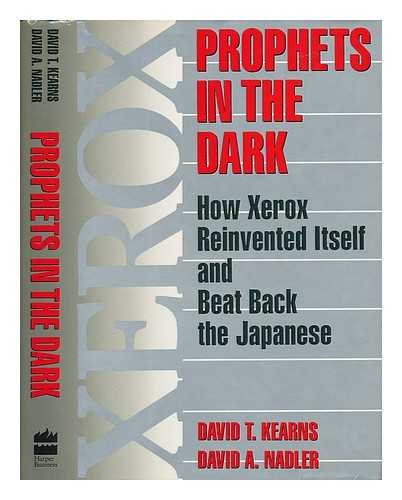Synopsis
The former CEO of Xerox tells the inside story of how the company revolutionized its structure using a "leadership through quality" strategy
Reviews
Former Xerox CEO Kearns and business consultant Nadler here relate how Xerox marketed the exclusively patented plain-paper copying machine into a billion-dollar business in the 1960s, then became complacent and fell monumentally behind world competition by the early '80s. But under Kearns's leadership and a successfully executed program of product and service quality, Xerox became "the first major American company targeted by the Japanese to regain market share from them." Readers may be surprised to learn that quality based on customer satisfaction is an unusual manufacturing and marketing concept, and that such a strategy contributed to Xerox's resurrection. This inside look at the workings of a giant international corporation is eminently readable and informative. 50,000 first printing; $75,000 ad/promo; author tour.
Copyright 1992 Reed Business Information, Inc.
An insider's earnest report on how Xerox won, lost, and regained control of the multibillion-dollar global market it launched in plain-paper copiers. In collaboration with business-consultant Nadler, Kearns (Xerox's CEO from 1982 to 1990) presents the Xerox turnabout as a paradigm of the war between US industry and its offshore rivals, most notably the Japanese. He begins, however, with an engaging account of xerography's origins and wonder years. From a near standing start in 1959, when it introduced the 914 office copier, Xerox became an overnight success story. While annual revenues topped $1 billion by 1968, prosperity brought complacency. During the late 1970's, the company lost ground to the Japanese, and, by 1982, when Kearns took command, Xerox's piece of the worldwide action in copiers had been halved, to just over 40%, and the company was in real danger of floundering. With support from a small circle of aides (so-called ``prophets in the dark''), Kearns mounted a remarkable comeback campaign built on a thoroughgoing commitment to quality--and the Series 10 machines that enabled Xerox to regain market share. The collateral benefits of the makeover were impressive by any standard. By the late 1980's, the company had slashed assembly costs by almost 50% while doubling output and improving performance by substantive margins. Kearns attributes Xerox's new-found capacity to beat Asian adversaries at their own game to many factors, including innovative production techniques, greater receptivity to new ideas, and a multinational approach to manufacturing as well as marketing. Whether Xerox's recovery is unique or may serve as a model for others, though, is difficult to determine from the authors' commentaries, which are longer on broad perspectives than practical advisories. Valuable, if solemn, first-person insights on the price of renewal from a professional executive who knows the territory. (Sixteen pages of b&w photos--not seen.) -- Copyright ©1992, Kirkus Associates, LP. All rights reserved.
Unlike Roy Bauer and others' The Silverlake Project ( LJ 4/1/92), Prophets in the Dark reads like a very real success story. Kearns, who became Xerox's CEO in 1982, and Nadler, his consultant, carefully trace the development of the copier company and honestly tell where Xerox went off the rails and the steps it is continuing to take to come back again against heavy competition from many Japanese corporations and its domestic rivals. Unlike other business success tales, this is a well-developed, well-written story for the lay reader as well as the informed business person. Recommended as a welcome addition to any general business collection. On a scale of 1 to 5, this rates a 4.5.
- V.A. Munch, Montville Twp . P.L., N.J.
Copyright 1992 Reed Business Information, Inc.
"About this title" may belong to another edition of this title.
